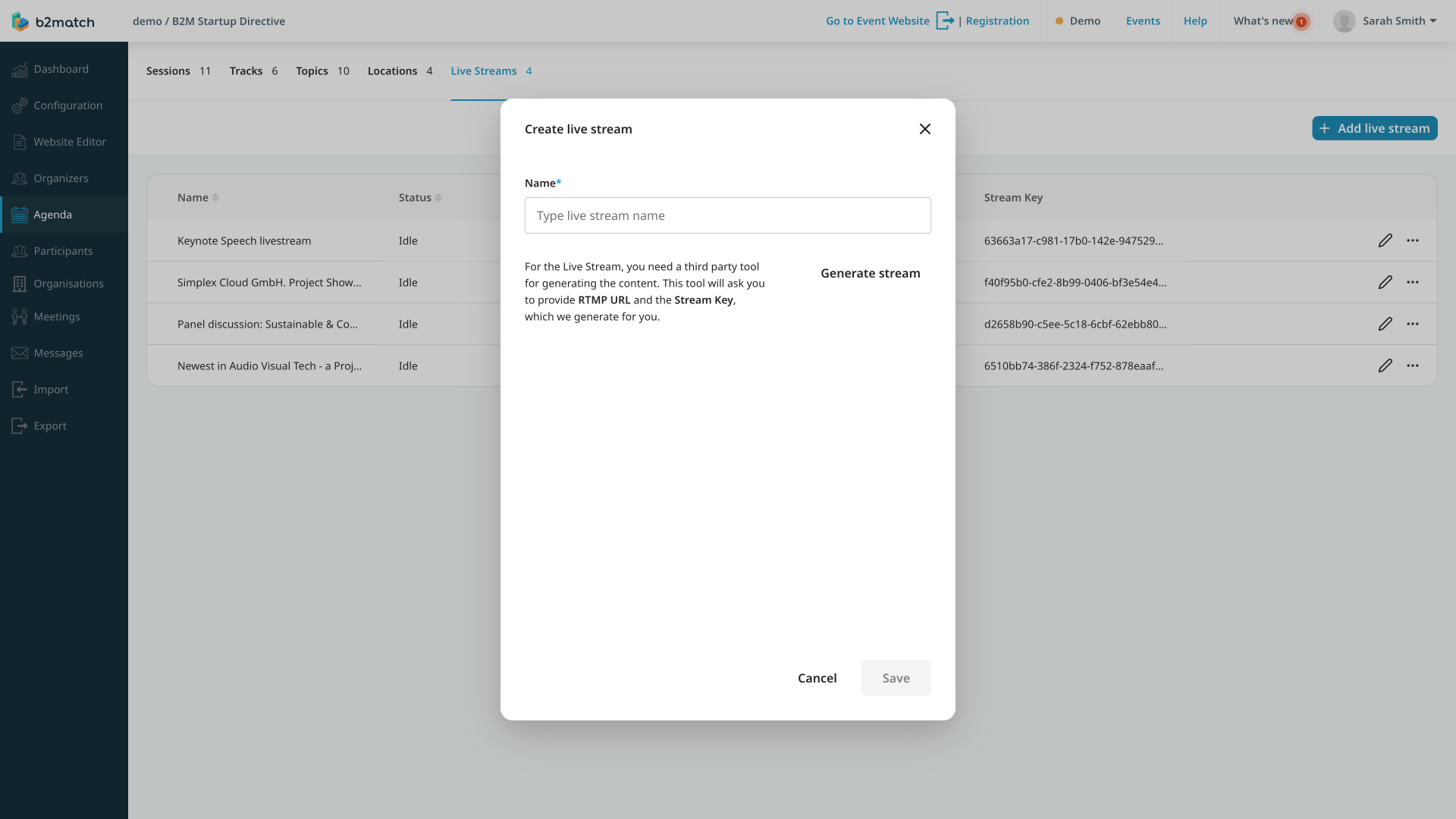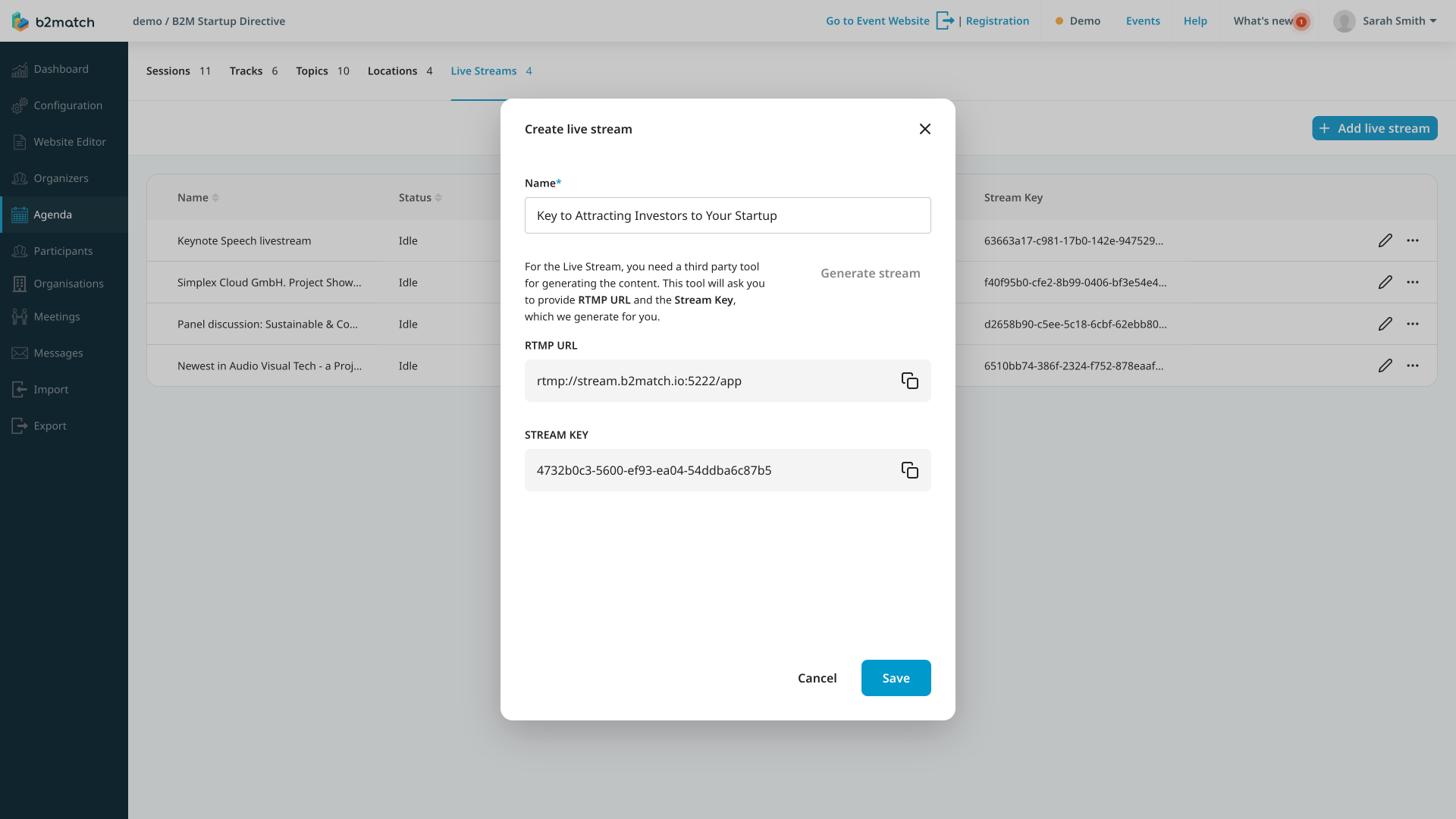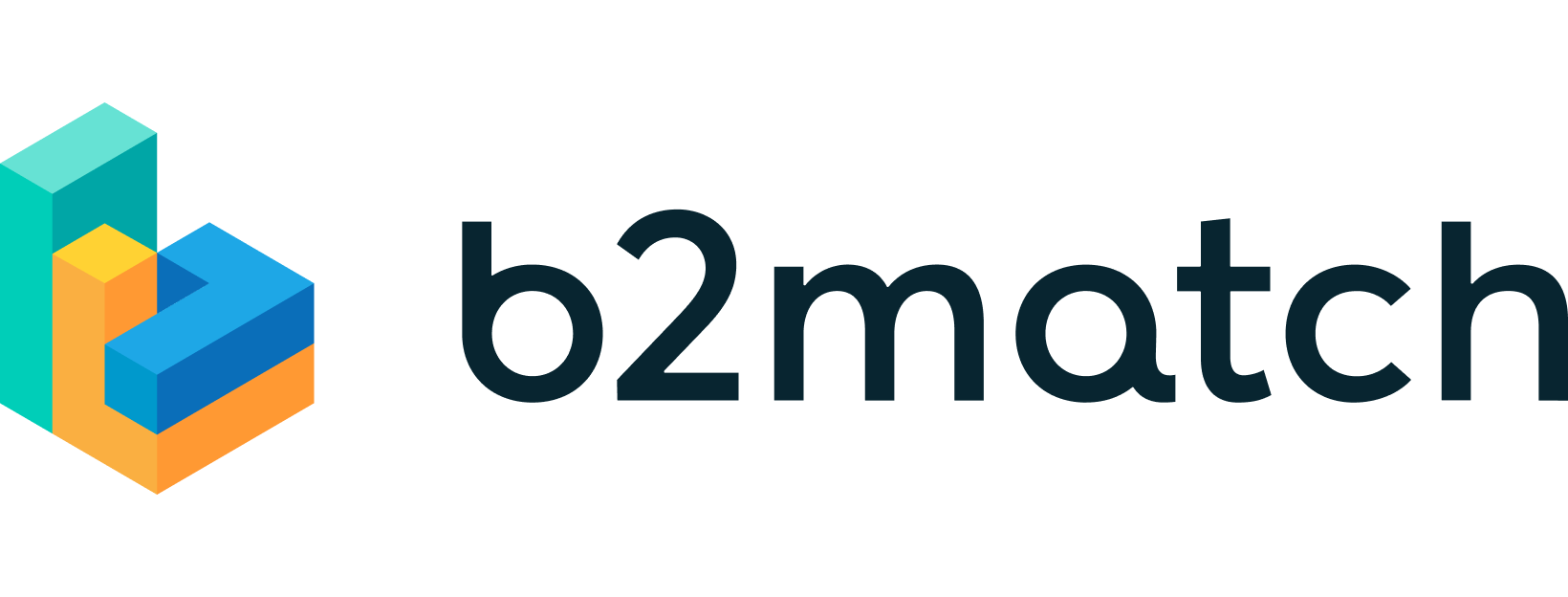Creating Live StreamsUpdated a year ago
You're organizing an event and realize you will have a large audience that wants to attend a session. However, hosting virtual sessions that can hold a lot of people brings its own set of challenges that may result in a loss of audience engagement, which is detrimental to the success of your event. But, what if there was a way to minimize these risks and ensure that your event runs smoothly?
The good news is that there is! Live streams are an excellent solution to this problem.
Why are live streams useful?
Live streams are a popular means of broadcasting sessions to a broad audience in real-time. If you are planning an event that includes sessions that don't require direct interaction from participants, you should consider live streaming the sessions. This is particularly relevant for presentations, speeches, keynotes, and similar sessions.
Live streams are better suited for larger audiences compared to video conferencing, as they minimize the risk of disruptions and prevent potential bandwidth issues that could arise during the event. By opting for live streaming, you can ensure that your message is conveyed effectively to a broader audience while maintaining a high level of engagement throughout the event.
How can I create a live stream?
First, navigate to the Agenda from the left sidebar and access the Live Streams tab.
Here, click on the Add live stream button in the upper right corner.

This will open the Create live stream modal.

In the Create live stream modal, type in the name of the live stream.
Then, click on the Generate stream button below. This will open 2 additional fields: RTMP URL and Stream key, which the b2match platform generates for you.

After that, click on Save.
If you didn't find an answer to your questions, please get in touch with the Support Team here.
